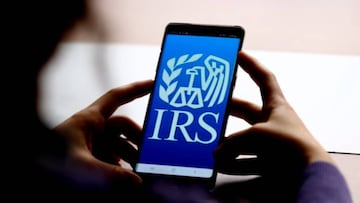When is the earliest you will receive your tax return if you applied for Child Tax Credit?
Applying for Child Tax Credit can delay your refund even if you e-filed your income tax return early, and chose the direct deposit option to receive it.


The 2024 tax season began on January 29, and the IRS reports that it had already issued 2.6 million refunds worth more than $3.6 billion just days after they began receiving returns.
However, this number does not include taxpayers who applied for Additional Child Tax Credit (ACTC) or Earned Income Tax Credit (EITC).
Qualified taxpayers may claim up to $2,000 per child on their return thanks to the Child Tax Credit, while eligible workers can apply for a maximum of $7,430 in Earned Income Tax Credit.
READ ALSO: Tips to avoid an audit by the IRS
When is the earliest you will receive your tax return if you applied for Child Tax Credit?
The tax agency has said that they issue most refunds in less than 21 calendar days, but this may not always apply to those who applied for ACTC or EITC. The law prohibits the IRS from issuing a refund before February 15 if you applied to receive either credit.
The law in question is the Protecting Americans from Tax Hikes (PATH) Act, which took effect seven years ago. The measure was passed to help prevent loss of revenue due to refund fraud related to false wages and withholdings.
According to the IRS, most Earned Income Tax Credit and Additional Child Tax Credit refunds “should be available in bank accounts or on debit cards by Feb. 27″ if taxpayers chose direct deposit as the method to receive them, and there are no other issues with their tax return.
READ ALSO: What days of the week are tax refunds sent?
Republicans killed the Child Tax Credit and in doing so, doubled childhood poverty.
— Rachel Bitecofer 🗽💡🔭🦆 (@RachelBitecofer) February 14, 2024
Pass it on. https://t.co/il4iEDni52
Non-credit portions of refund cannot be released partially
The IRS says it would hold the entire refund until February 15, including those parts that are not associated with Child Tax Credit or Earned Income Tax Credit.
Related stories
The agency says neither the IRS nor the Taxpayer Advocate Service can release any portion of the refund before that date, even if the taxpayer is going through financial hardship.
You can check the status of your refund with the “Where’s My Refund” tool on the official IRS website, or on the IRS2Go mobile app.


Complete your personal details to comment